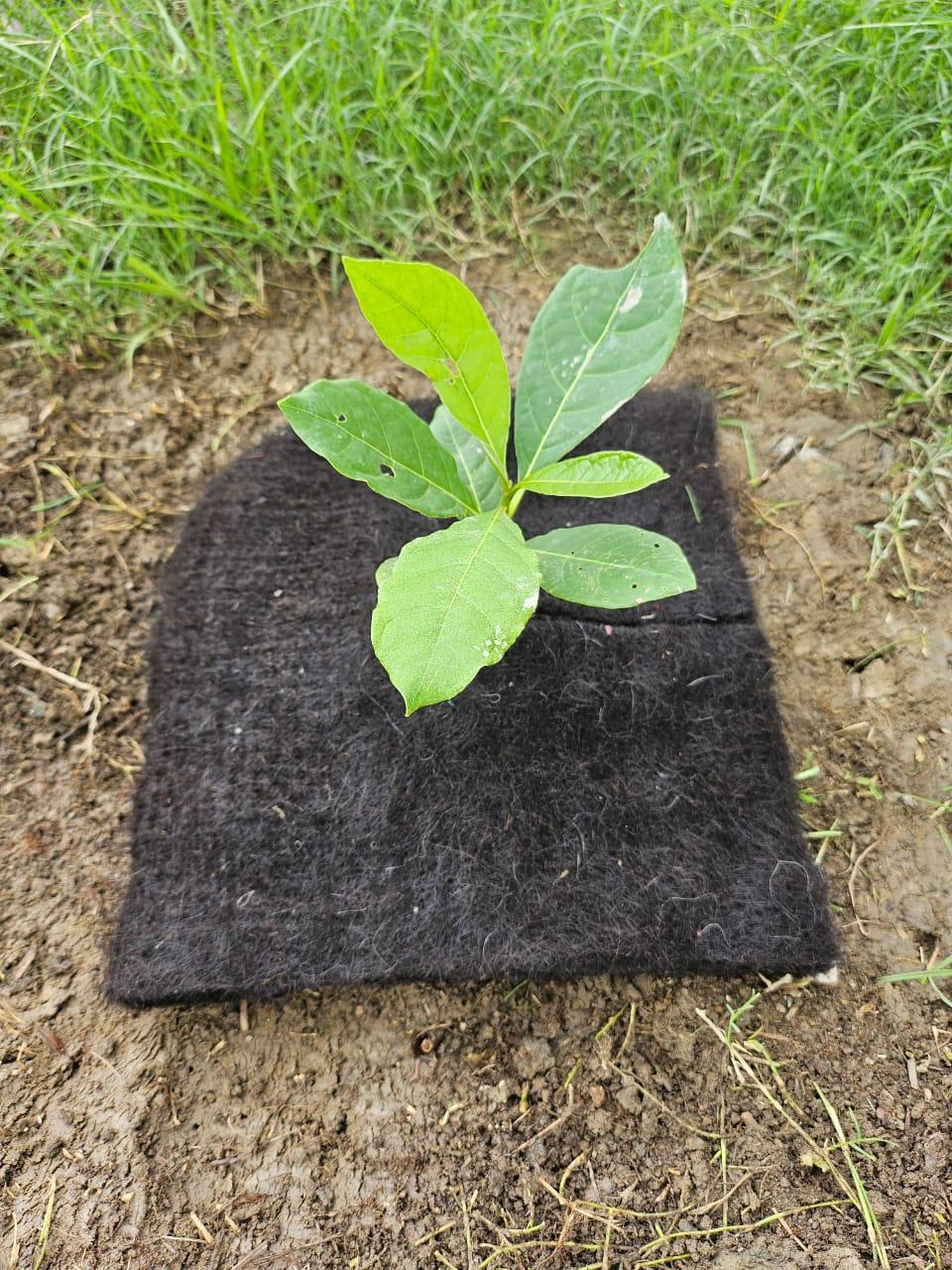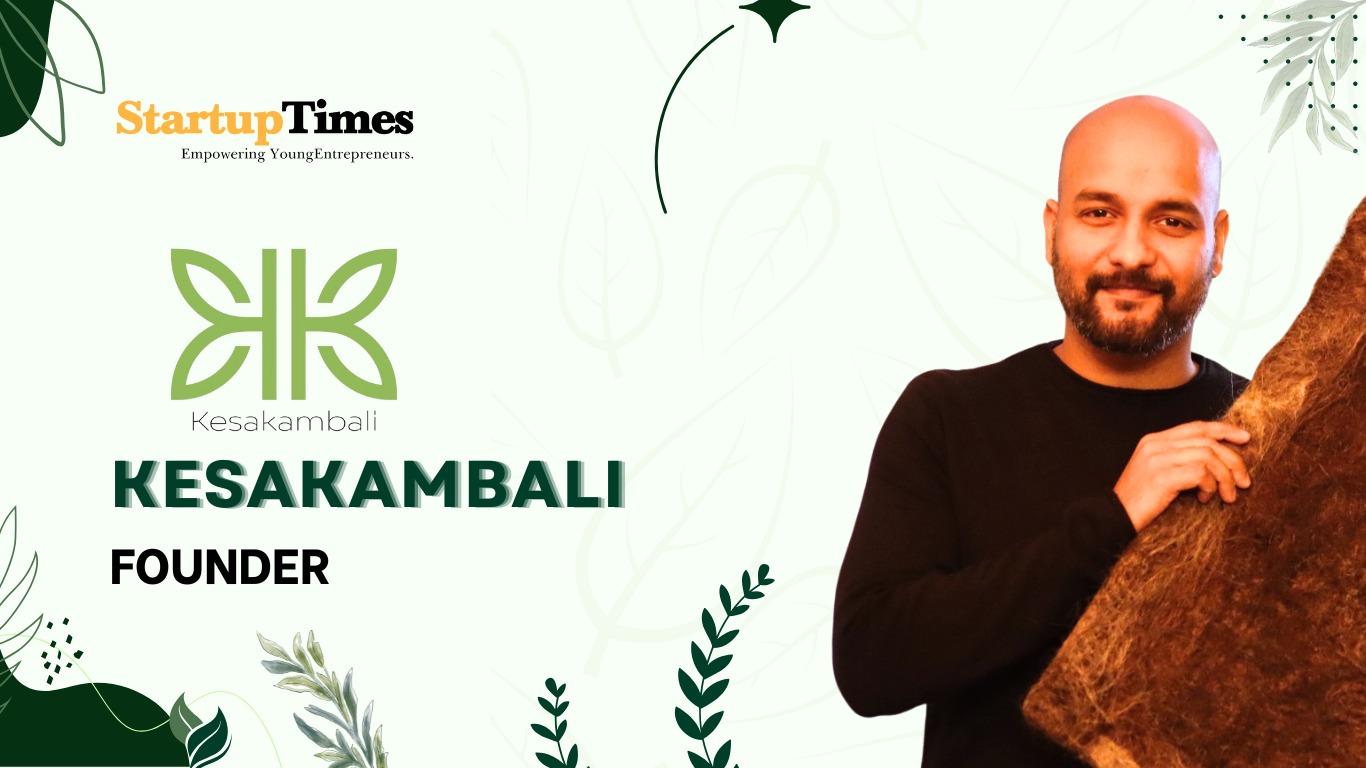Reimagining Sustainability through Hair
In an age where sustainability is no longer optional, Kesakambali Foundation is proving that environmental innovation can come from the most unexpected sources—even human hair.
Rooted in the principles of circular economy and guided by the needs of rural India, the Foundation is pioneering the country’s first large-scale environmental tech solutions made from discarded human hair. Founded in 2023, Kesakambali is reshaping how India thinks about waste, agriculture, and water conservation—all by giving new purpose to a misunderstood material.
The Numbers Behind the Mission
India uses nearly 83% of its freshwater—over 600 billion cubic meters annually—for agriculture alone. Yet, 60% of irrigation water is lost due to evaporation, seepage, and inefficient practices.
With every kilogram of hair used, Kesakambali’s mats can conserve up to 20,000 litres of water annually.
One 60x60 cm hair mat helps retain 2–3 litres of water per day—critical in drought-prone regions.
Two Initiatives, One Ecosystem
Kesakambali Foundation operates under two flagship programs:

1. Bhoomi Sanchay
Biodegradable hair mats deployed on farms to:
2. Jala Sanchay
The same mats used as natural oil absorbents in water bodies to:
Both initiatives address India’s twin challenges: agricultural water stress and rising environmental contamination.
Building Ethical Alternatives to Hair Smuggling
While the hair trade in India has traditionally focused on extensions and wigs, Kesakambali Foundation introduces a more ethical and sustainable use.
By creating a verified donation-to-impact model, the Foundation:
Ensures traceability in the hair supply chain
Combats illegal smuggling
Supports positive, community-driven environmental outcomes
Key Programs and Community Involvement
Certified Hairdresser Program:
Salons across India partner with Kesakambali to ethically collect hair waste and receive training in environmental awareness.
Hair Donation Drives:
Individuals contribute by donating their hair, now seen as a renewable resource for environmental good.
Open-Source Research:
Collaboration with agricultural scientists and NGOs to publish impact reports and field data, advancing scientific knowledge and public awareness.
CSR Partnerships:
Corporates support Kesakambali’s water conservation and agro-ecology efforts under their ESG mandates.
From Temples to Farmlands: The Spark Behind Kesakambali
Recognizing that a large portion of India’s donated hair reaches global markets with little traceability, Kesakambali Foundation reclaims this resource for public good.
Their model aligns ethics, science, and sustainability—bridging the gap between surplus hair waste and rural climate resilience.
Hair Matters: Turning Waste into Eco-Weapons
The Foundation’s pioneering initiative, Hair Matters, transforms discarded or donated hair into biodegradable, nutrient-rich mats to address environmental challenges at their root.
Bhoomi Sanchay: Restoring Soil Health
Kesakambali’s mats:
Ideal for drought-prone and degraded lands
Jala Sanchay: Reviving India’s Water Bodies
Deployed in ponds, lakes, and rivers, these hair-based filtration mats:
Trap toxins and pollutants
Absorb oil and heavy metals
Support biological regeneration
Breathing new life into India’s vital water bodies.
Innovation Without Precedent
Kesakambali Foundation is not merely recycling, but repurposing human hair for environmental resilience—an approach with no local precedent in India.
By connecting the country’s two massive yet disconnected sectors—agriculture and human hair exports—the Foundation creates a sustainable feedback loop with far-reaching impacts.
Changing Perceptions, One Strand at a Time
One of the greatest challenges has been changing public perception. Traditionally, hair has been valued either as a religious token or cosmetic material.
Through rigorous field trials and demonstrations, Kesakambali Foundation proves that hair can be a powerful force for regenerative change—earning trust in farming and temple communities alike.
A Tangle of Myths and Truths
Myth: All donated hair becomes wigs for cancer patients.
Truth: Much is auctioned, exported, or untraceably diverted.
Myth: Human hair is waste.
Truth: Human hair is biodegradable, nitrogen-rich, and highly absorbent—making it ideal for ecosystem restoration.
Through awareness campaigns, the Foundation is rewriting the narrative—from waste and exploitation to regeneration and value.
Milestones and Impact
By directing surplus hair to degraded lands and water bodies, Kesakambali Foundation proves that a circular economy is both practical and impactful.
They show that misunderstood resources can become life-giving inputs for soil and water.
Vision 2030: Hair Today, Greener Tomorrow
Currently, India exports around 3,000 tonnes of hair annually (less than 10% of what’s generated); most hair is dumped, burned, or clogs drainage systems.
By 2030, Kesakambali aims to:
Divert 50% of hair waste into regenerative use
Restore 1,000+ water bodies
Support climate-smart agriculture in over 10,000 villages
Promote ethical hair donation
Create 10,000+ green rural jobs
Filling a Market Gap
There is no national system for structured hair collection or widespread awareness about hair’s ecological potential.
Kesakambali addresses this gap through:
Community training
Scientific R&D
Awareness campaigns
Scalable deployment
They are emerging as a national model for circular environmental change.
Advice from the Roots
Kesakambali Foundation offers this guiding message:
"Build something that gives back. Solve a real problem. Don’t chase valuation—chase value."
Rooted in ethics, driven by science, and inspired by purpose, the Foundation proves that solutions can come from even the most unexpected natural materials.
Connect with the Change











